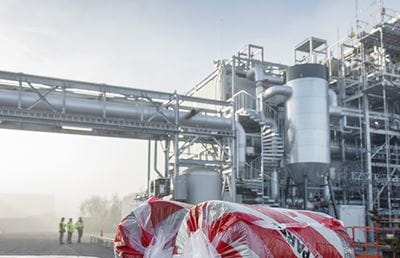 Unfortunately, energy efficiency tends to lag behind the other methods that are perhaps considered a little more modern. This is a shame as improving energy efficiency, for example with the aid of technical insulation, is not only an effective but also a cost-effective way to promote a low-carbon future. Technical insulation also reduces emissions from construction and industrial processes throughout their life cycles.
Unfortunately, energy efficiency tends to lag behind the other methods that are perhaps considered a little more modern. This is a shame as improving energy efficiency, for example with the aid of technical insulation, is not only an effective but also a cost-effective way to promote a low-carbon future. Technical insulation also reduces emissions from construction and industrial processes throughout their life cycles.
It is also worrying that an idea gaining a foothold is that technical insulation is just a maintenance cost item and not an investment in energy efficiency. The industry is pinching from insulation and compromising on its quality as it pursues cost savings and, when designing buildings, so little space is reserved for building technology that sufficient insulation is not possible.
This is like “throwing the baby out with the bathwater”. What you gain from short-sighted cost savings, you lose in energy efficiency, maintenance costs and the length of the technical life-cycle – not to mention impacts on climate.
Towards carbon neutrality with high-quality insulation
It is generally acknowledged that the management of energy flows is one of the most important factors affecting the efficiency and performance of industrial processes. High-quality insulation is an effective way to improve the energy efficiency of processes and an investment that has a very short payback period. Cost savings and benefits to the climate can be achieved as soon as insulation has been installed and, what is particularly important, this happens regardless of the form of energy used. Of course, other benefits like fire safety can also be achieved by insulation. In my opinion, there is even room for tightening installation requirements in industry. It would also be good for decision-making on insulation solutions to be carried out by those who can assess the investment in relation to its overall benefits such as improvement in energy efficiency, reduction of life-cycle- and maintenance costs and reduction of environmental impacts.
Insulation in building technology pursues largely the same benefits as in industry, that is to say the reliability, energy efficiency and fire safety of the operation of equipment. In addition, pleasant and healthy indoor air in buildings is also targeted. Cost pressures have unfortunately created a situation in which, despite increasing and developing building technology, square metres are not increasing so there is not enough proper space for sufficient technical insulation. Because of this, some of the benefits are not achieved, be it in terms of the cost savings or climate benefits of better energy efficiency.
Insulation products and know-how exist – but is there the will?
High-quality and low-carbon technical insulation such as mineral wool products do exist as does the knowledge of their use, but where can we find sufficient foresight and will to utilise them in an optimal way? The sub-optimisation carried out by parties in the value chain of industry and construction does not serve carbon neutrality well. Could at least part of the solution be found in closer cooperation in the value chain in which overall solutions that are as low-carbon as possible in terms of the entire life-cycle of a building or industrial process could be set as a shared goal?

Toni Saukkonen
Sales Lead, PAROC Technical Insulation
 Unfortunately, energy efficiency tends to lag behind the other methods that are perhaps considered a little more modern. This is a shame as improving energy efficiency, for example with the aid of technical insulation, is not only an effective but also a cost-effective way to promote a low-carbon future. Technical insulation also reduces emissions from construction and industrial processes throughout their life cycles.
Unfortunately, energy efficiency tends to lag behind the other methods that are perhaps considered a little more modern. This is a shame as improving energy efficiency, for example with the aid of technical insulation, is not only an effective but also a cost-effective way to promote a low-carbon future. Technical insulation also reduces emissions from construction and industrial processes throughout their life cycles.